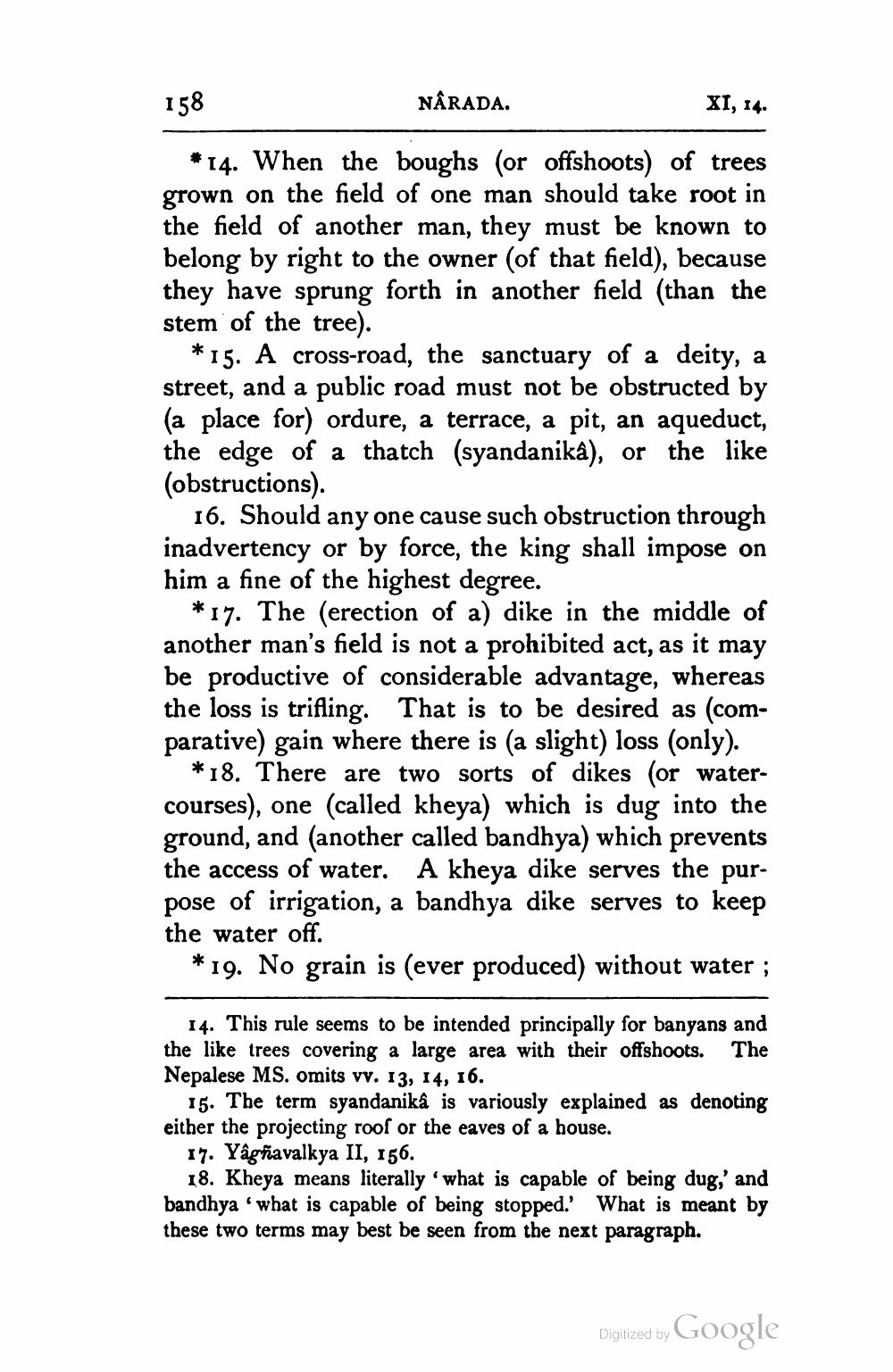________________
158
NÅRADA.
XI, 14.
*14. When the boughs (or offshoots) of trees grown on the field of one man should take root in the field of another man, they must be known to belong by right to the owner (of that field), because they have sprung forth in another field (than the stem of the tree).
*15. A cross-road, the sanctuary of a deity, a street, and a public road must not be obstructed by (a place for) ordure, a terrace, a pit, an aqueduct, the edge of a thatch (syandanika), or the like (obstructions).
16. Should any one cause such obstruction through inadvertency or by force, the king shall impose on him a fine of the highest degree.
*17. The (erection of a) dike in the middle of another man's field is not a prohibited act, as it may be productive of considerable advantage, whereas the loss is trifling. That is to be desired as (comparative) gain where there is (a slight) loss (only).
*18. There are two sorts of dikes (or watercourses), one (called kheya) which is dug into the ground, and (another called bandhya) which prevents the access of water. A kheya dike serves the purpose of irrigation, a bandhya dike serves to keep the water off.
* 19. No grain is (ever produced) without water ;
14. This rule seems to be intended principally for banyans and the like trees covering a large area with their offshoots. The Nepalese MS. omits vv. 13, 14, 16.
15. The term syandanika is variously explained as denoting either the projecting roof or the eaves of a house.
17. Yâgħavalkya II, 156.
18. Kheya means literally what is capable of being dug,' and bandhya 'what is capable of being stopped. What is meant by these two terms may best be seen from the next paragraph.
Digitized by Google




